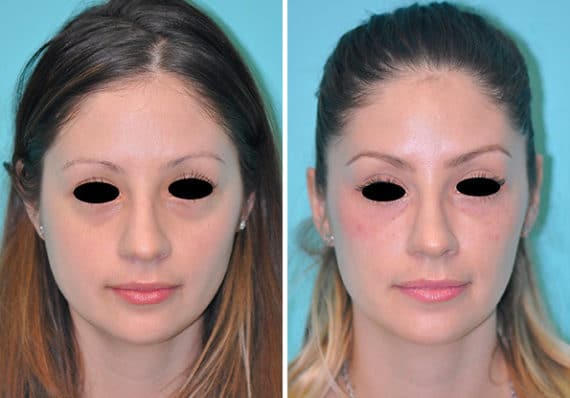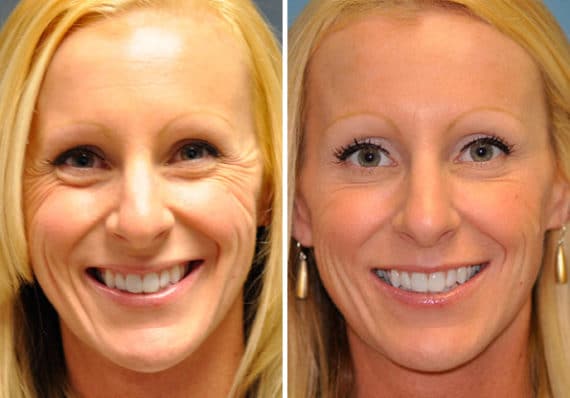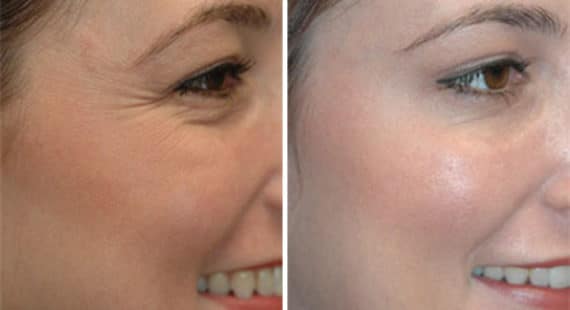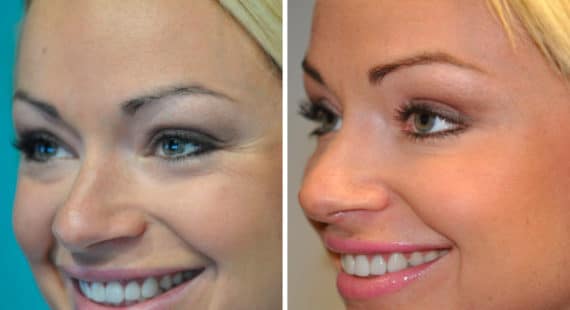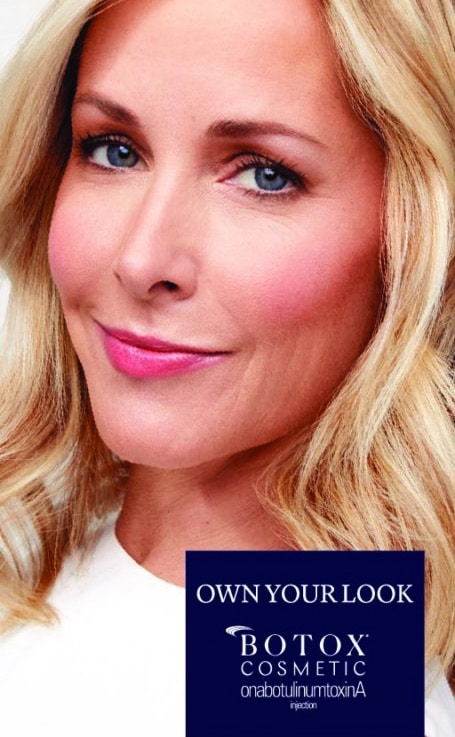Botox in Virginia, Washington D.C. and Maryland.
Embark on a journey of aesthetic excellence with The Naderi Center. Experience unparalleled artistry and precision for transformative beauty.
Refresh Your Face with Botox Benefits
Turn back the clock with Botox® at The Naderi Center. Our trusted team of providers carefully tailors each treatment to soften wrinkles and restore a youthful, polished look—without downtime or drastic change.
Wrinkle Reduction
Make those lines and crow's feet a thing of the past. Botox effectively minimizes these signs of aging, leaving you looking fresher.
Quick and Easy
With minimal discomfort and no downtime, Botox fits into your busy lifestyle while offering maximum impact.
Lasting Results
Enjoy smoother skin and a youthful glow for months, reducing the need for frequent treatments. Your best self is here to stay.


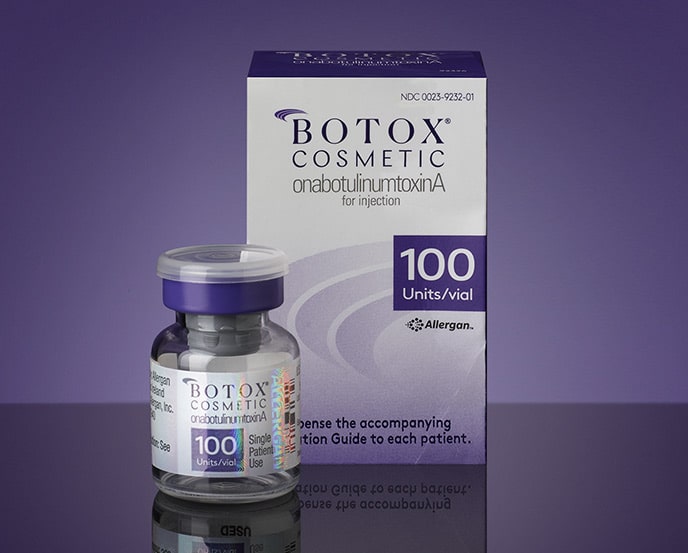
What is Botox®
Botox® is a non-surgical injectable treatment that relieves facial wrinkles, particularly horizontal forehead wrinkles, lines located between the eyes, and the “crows’ feet” at the corners of the eyes. Botox® is a neurotoxin (Botulinum Toxin) that works by relaxing dynamic wrinkles, or those associated with repeat facial movements like frowning, smiling as well as squinting. Botox® effectively relaxes the underlying muscles responsible for the facial expressions, thus smoothing the associated wrinkle for a rejuvenated appearance.
The Botox Chevy Chase treatment works best when started at a younger age specifically in your late 20’s and early 30’s. The skin begins forming fine lines as a result of over expression such as smiling, eyebrow expression, and squinting. A physician can use Botox® for wrinkle prevention as early as age 20. Botox® is also effective for older patients once “static” wrinkles have formed.
Expected Results after Botox®
- Relaxed muscles responsible for certain facial expressions
- Smoothening of frown lines, crows feet and forehead lines as soon as 3-5 days after treatment
- Reduce the appearance of a “gummy smile”
- Improvement in lines around the mouth
- Reduce size of masseter muscle on the jaw and reduce size of wide appearing jaw
- Create a subtle “browlift,” elevating the outer eyebrow to create a more arching eyebrow
- Results lasting for up to 4 months
Ideal Candidates for Botox®
Good Candidates for Botox®.
- Are young individuals desiring to prevent fine lines as well as facial wrinkles
- Individuals that have moderate to severe wrinkles
- Have gum show when they smile
- Have lines around their mouth when they make certain facial expressions
Botox® Injection Techniques
How does Botox® work?
Botox® works at the nicotinic nerve ending, preventing the release of the acetylcholine neurotransmitter vesicles. This inhibits communication between the nerve and target muscle.
Botox® relaxes voluntary muscle movement in certain facial areas. It reduces or eliminates “dynamic wrinkles” or those wrinkles which become more pronounced with expression and movement. People know as “static wrinkles” those that are present when resting. Botox® alone will not address “static wrinkles.” Additional procedures such as CO2 laser or Dermal Fillers may enhance your appearance when used with Botox®.

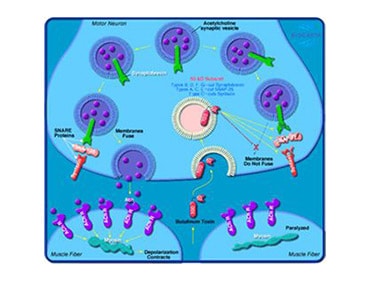
Figure 2: Botox® molecules are shown above binding to the nerve ending, preventing release of neurotransmitters into this space and not allowing nerve to muscle communication, resulting in relaxation of the muscle.
Some patients find the Botox® injection’s effect continues for six months or more. Generally, in these cases the Botox® has worn off; however, muscle memory has been interrupted, meaning the patient no longer frowns or squints as before the Botox® injection.
The best timing for your injection is before your last Botox® injection wears off. The goal is to keep the targeted muscles in a weakened state. Our patients are encouraged to schedule their visits before their frown muscles are able to regain bulk or strength. Weaker muscles mean fewer wrinkles. In some cases, just getting re-injected once or twice per year can show a great impact. However, to ensure the best results, Botox® should be re-injected three to four times per year.
Important Factors when Injecting Botox®
How many units of Botox are used?
Where is my Botox injected?
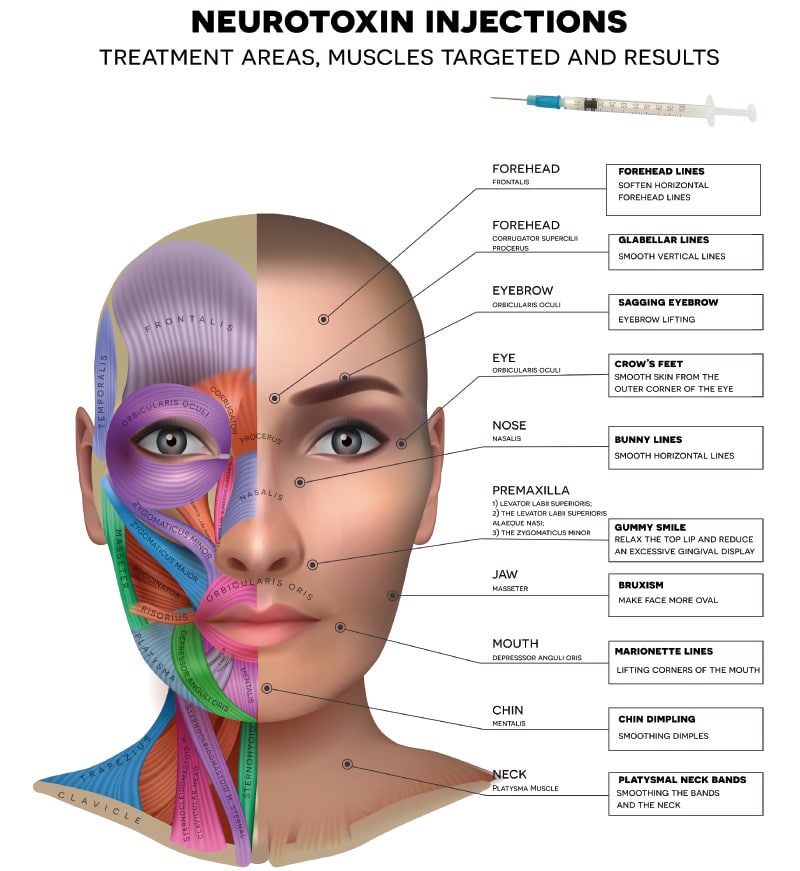
Botox Units
Botox® comes in vials of 50 or 100 units which are diluted by your medical provider to a specific concentration. How dilute or how concentrated the final solution of Botox® is helps determine both how effective the treatment is as well as how much the solution will spread when injected into the muscle. More dilute solutions will require the provider to inject more volume and thus increasing the chance that the Botox® will spread farther and potentially paralyze unintended muscles. At The Naderi Center we use 2 cc or mL of saline for 100 units of Botox®. We find that this concentration allows us to achieve precise results with a minimum number of needle sticks into the skin.
Botox® Injection Sites
Facial wrinkles form perpendicular to the muscle contracting. Botox® must be injected into the muscles, not the wrinkle. The goal is to weaken your facial muscles, relaxing them and refreshing your appearance.
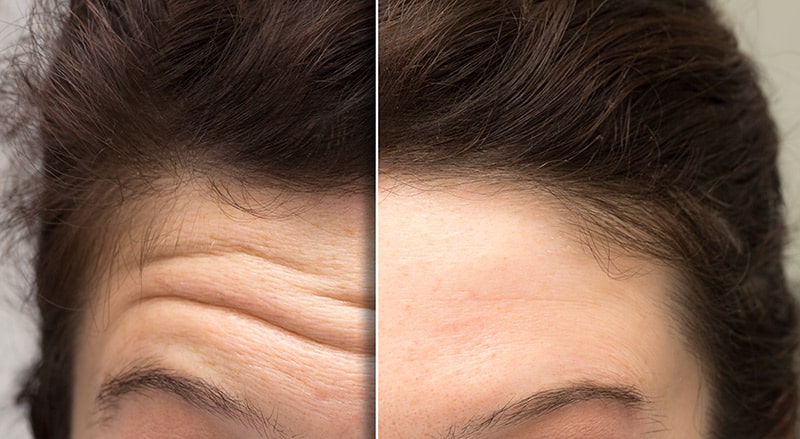
Forehead Botox® Injection
- Frontalis muscle: Soften forehead vertical lines
- Both Currugator Supercilii and Procerus muscle: Smoothen vertical lines
- Option to create a browlift
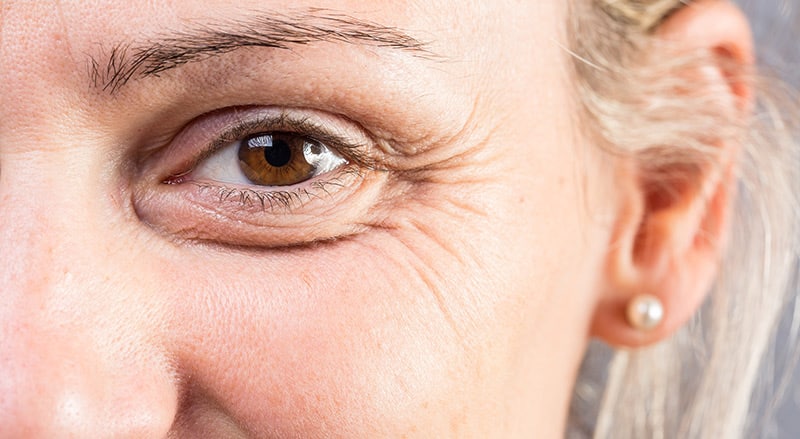
Eyebrow Botox® Injection
- Obicularis oculi: crow’s feet, smoothen lines on the outer corner of the eye
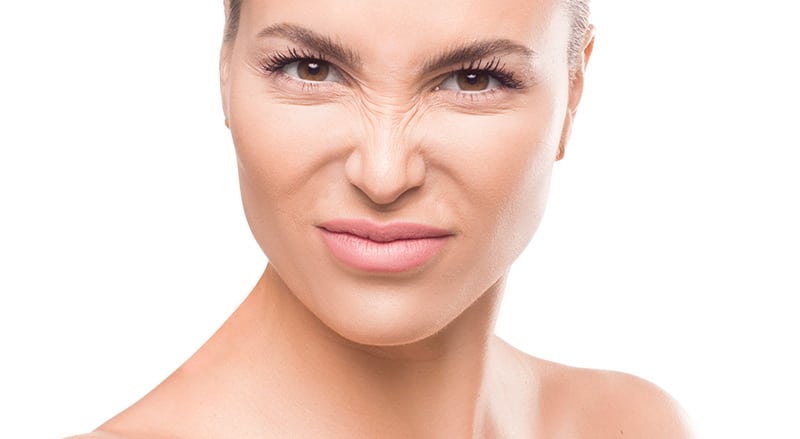
Nose Botox® Injection
- Nasalis: bunny lines
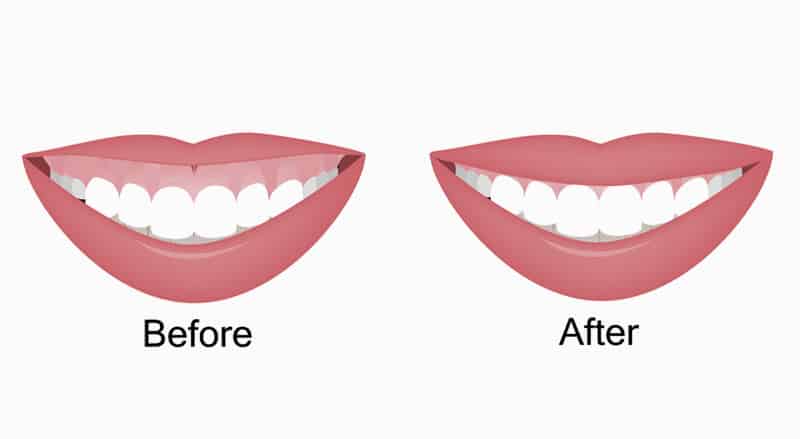
Premaxilla Botox® Injection
- Gummy smile: relax top lip andreduce gingival show
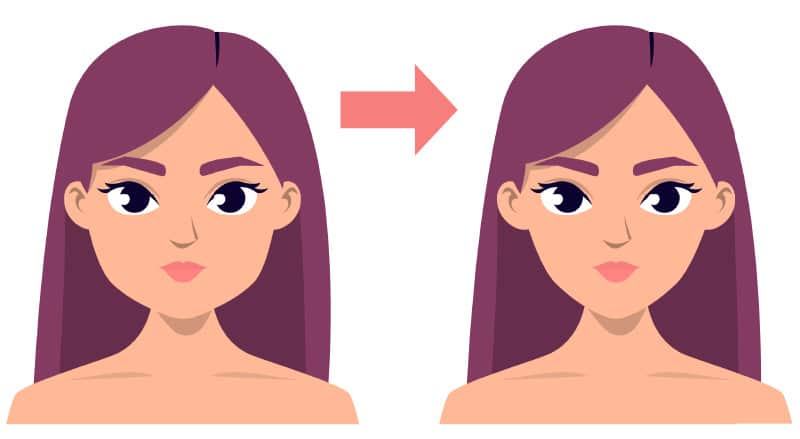
Jaw Botox® Injection
- Masseter: reduce broxism and make jaw more oval shaped
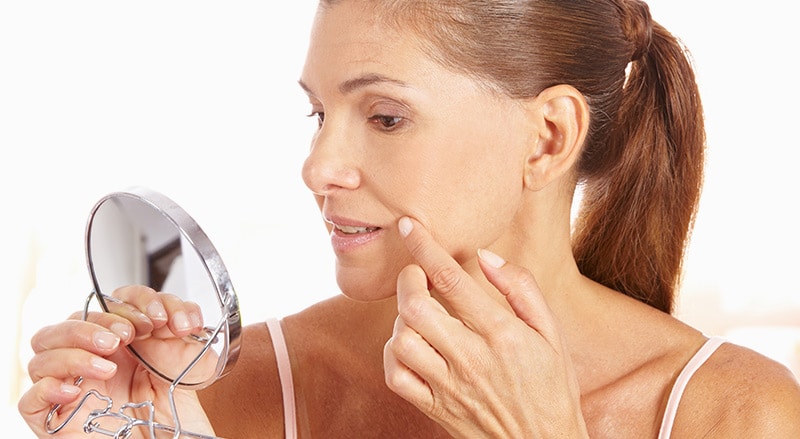
Mouth Botox® Injection
- Treatment of marionette lines, lifting corners of mouth
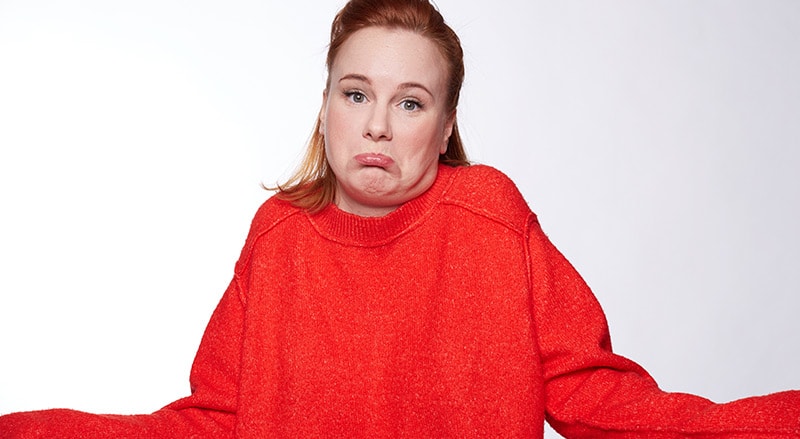
Chin Botox® Injection
- Mentalis: reduce chin dimpling or “peau d’orange”
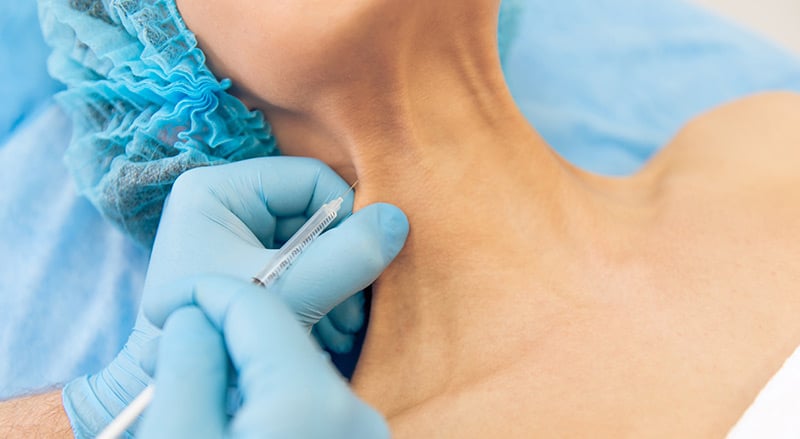
Neck Botox® Injection
- Platysma Muscle: reducing appearance of bands on the neck
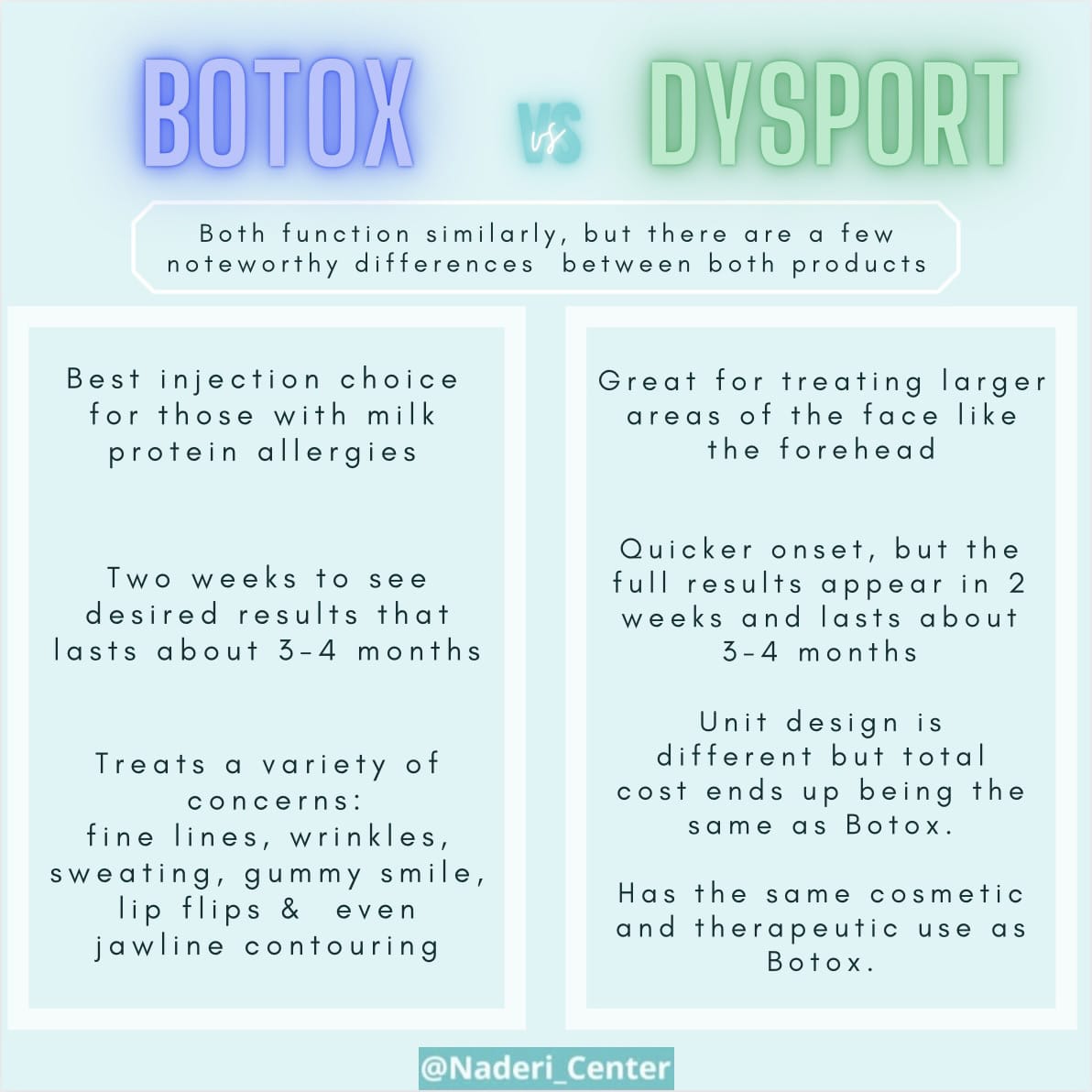
Frequency of Botox Injections
The effects of Botox aren’t permanent and usually wear off after a few months. Many patients find that their results start to fade around the three-month mark. Some find that the results last for six months or in some cases, a year. If that happens, it is not because of the Botox itself, but because the muscles have retrained themselves and don’t move the way they did pre-Botox.
Although some patients might be concerned about having several Botox injections each year, it’s usually recommended that they get the treatment every three or four months. Ideally, you’ll have a repeat treatment before the effecs of the injection wear off, so that the facial muscles treated remain weak and the wrinkles don’t have a chance to return.
If you can’t have Botox three or four times a year, you’ll still see results from once or twice yearly injections. In many cases, though, you’ll see the greatest improvement in your wrinkles with more frequent injections.
Testimonial
“The botox above my right eye worked great. The huge wrinkle is now gone! Thank you.”
Amount of Botox Injected
When it comes to the amount of Botox injected into the treated area, too much of a good thing is possible. Having too much of the substance injected at one time can put you at risk for side effects or complications. One side effect is having the Botox travel from the injection site to another part of your face. The migrating Botox can cause symptoms such as a drooping eyelid or a “frozen” look on your face. Although unpleasant, these side effects are temporary and should wear off within a few days.
Since knowing the right amount to inject is critical, it’s important that you find an injector who is trained and experienced with the procedure. There should be no guesswork involved during a treatment with Botox. You want a medical professional who knows exactly how much to inject and where to inject it.
Preparation for Botox® Treatment
2 Weeks Prior To Botox® Injection
- To both reduce and minimize bruising please follow our dietary restrictions. For 2 weeks before your appointment avoid nuts, seeds, fish, fish oil, NSAIDs, supplements, and anything that prolongs bleeding.
Day Of Botox® Injection
- Wear as little to no makeup as possible.
- Make sure you have eaten and your blood sugar is not low
- Make sure you drink plenty of water, avoid dehydration
- Dress in cool comfortable clothes.
- Come in at least 30 minutes ahead of your appointment if you would like numbing cream
- Make your appointment for the next time before leaving the office since our doctors’ schedules book out months in advance.
Immediately After Your Botox® Injection
- Use a small bag of frozen peas in a sandwich bag or crushed ice to gently ice the area. No heavy ice bags. Ice for 20 minutes on and 20 minutes off. Continue the icing for 48 hours.
- No gym or exercise for 48 hours after injections.
- You can use water based makeup that day to cover any bruises. You can use heavier makeup the next day.
- Do not manipulate or massage or rub or poke the area.
- Likewise, no facials for the first week.
- You can wash your face normally and gently.
- Taking Arnica (Arnica) tablets and eating pineapples can reduce bruising and swelling.
Recovery after Botox® Treatment
The Naderi Center’s gentle, yet fast “no downtime” injection technique minimizes swelling and bruising. With us you can literally come in for your Botox® or Daxxify during your lunch hour and go back to work. Did you know that the longer the injection lasts, the greater the trauma resulting in additional pain and swelling?
General recovery guidelines after Botox® treatment include:
- Little to no bruising or swelling (follow dietary guidelines to reduce this risk).
- Botox®/Dysport® take up to 2 weeks to fully work. You may start to notice effects as soon as 3 days, but you can expect to have to wait the full 2 weeks.
- Botox®/Dysport® wears off in 3-4 months on average and patients must repeat 3-4 times a year.
- You will have some generalized soreness and sore/swollen spots from the needle.
Risks, Safety, and Potential Complications of Botox®
Botox® initially gained the United States government’s FDA approval in 1989 for the treatment of eyelid spasm. Many plastic surgeons used it “off label” for the reduction of wrinkles known as “frown lines” as well as “crow’s feet” and in the forehead. In 2002, Botox® gained its official FDA approval for the treatment of glabellar wrinkles also known as “frown lines” or the now infamous “11 lines” (lines between the brows) the very noticeable signs of aging.
Historically, Botox had many uses in non-cosmetic cases in many areas. Including children with cerebral palsy to reduce the amount of salivation and to prevent aspiration pneumonia. ENT surgeons use it to treat vocal cord spasms known as spasmodic dysphonia. urologists use it to treat hyperactive bladders and neurologists to treat migraine headaches. Even board certified dermatologists use it to reduce excess sweating.
Potential Complications after Botox® Treatment
- Allergic Reaction
- Infection
- “Frozen look” – Botox® works by weakening certain muscles of expression. The doctor must inject it in a correct pattern for natural expression. Botox’s bad publicity is a result of inexperienced injectors creating an unattractive look with inappropriate Botox® injections.
- Flu-like symptoms
- Minor headaches can occur
- Eyebrow or eyelid droop with possible double or blurry vision
- Muscle stiffness or weakness can theoretically occur, especially in people with Myasthenia Gravis.
Botox® Experts at The Naderi Center
At The Naderi Center, all of our Botox® specialists are highly skilled physicians with experience using Botox® for cosmetic purposes. We believe that every face is unique and that physicians need to customize Botox® treatments based on a persons facial anatomy and unique facial muscle strength. Many medspas and physician offices treat every face the same and charge Botox® injections by the area treated. However, in certain cases, a small faced petite woman who is not as expressive with her facial muscles may require less Botox® than a large male who may have very strong facial expression muscles. That is why at The Naderi Center we do not charge for Botox® by the area, instead we charge by the exact number of Botox® units your face requires to smoothen unwanted facial lines and wrinkles.
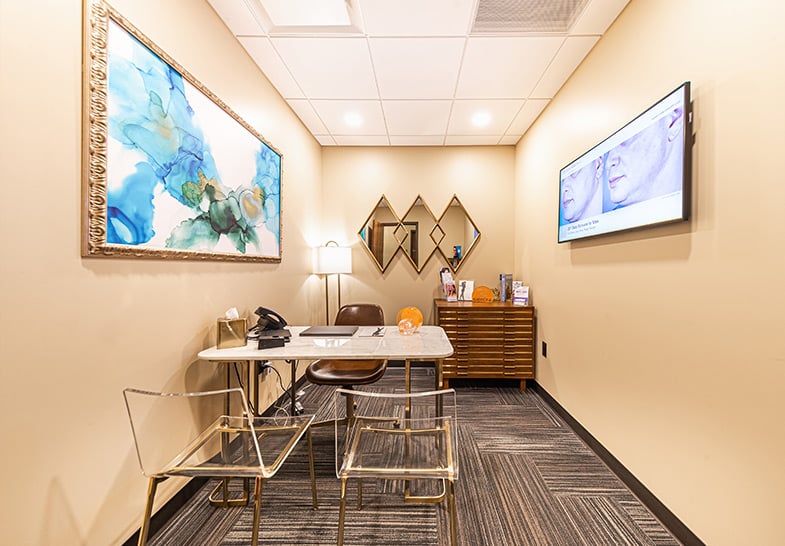
To find out more about if Botox® is right for you, contact The Naderi Center to schedule a consultation. Contact the Northern Virginia office at 703-481-0002 or the Chevy Chase, Maryland office at 301-222-2020. Although the Naderi Center is conveniently located for patients throughout the Virginia, Maryland, and Washington D.C. area, we have many patients from across the United States who come to our surgeons because they know they are ultra-specialized in their area of cosmetic plastic surgery. Those outside of the immediate area may request a virtual consultation prior to their in office visit.
Botox® FAQs
Who performs Botox at The Naderi Center?
Botox injections are performed by Dr. Shervin Naderi, Dr. Jessica Kulak, and Dr. Alexandra Snodgrass. Each physician tailors the dosage to your facial structure and muscle activity—never overdoing it and always aiming for a refreshed, natural look.
What are Botox® alternatives?
Botox® and Dysport® are the two most popular cosmetic wrinkle reduction substances in the United States. Dysport® and Xeomin® are similar to Botox®. Botox® was the original FDA approved neurotoxin for reducing wrinkles and lines.
Is there such a thing as “watered down” Botox®?
Yes there is such a thing as “watered down” Botox®. The strength of the Botox® solution is vital to a good outcome. Botox® is packaged in 50- and 100-unit sterile vials in powder form. Adding saline to the vial reconstitutes or dilutes the powder. Some Botox® providers “over-dilute” their Botox® which also dilutes the effectiveness of the treatment. Remember to always ask how many actual units of Botox® was used for your treatment.
How often must I have Botox® Injections?
In some cases, just getting re-injected once or twice per year can show a great impact. However, to ensure the best results, Botox® should be re-injected three to four times per year.
Is Botox® right for men?
Botox® is effective for men by reducing forehead wrinkles, frown lines, and crow’s feet. Men are excellent candidates. Botox® procedures 3 to 4 times per year will help prevent wrinkles. An experienced physician’s approach is vital in retaining natural expressions and preventing an over-arched eyebrow or a fake look.
Men require more Botox® because of their heavier muscles. The expert surgeons at The Naderi Center have the necessary experience and understanding of the amount of Botox® required for specific male muscles. Some men choose a lower dose injection with more movement and receive injections every two months.
What are the effects of Botox® in older patients
You cannot ignore your skin for 50 years and expect Botox® to work magic. However, Botox® may be a start on your path to a more rejuvenated appearance. Botox® has a more limited benefit in older patients when used alone. Patients in their 40s, 50s, 60s, 70s, and beyond can benefit from Botox®, although other procedures may be necessary for the optimum results.
In your 40’s, a good skin care regimen combined with chemical peels such as VI Peel as well as Fractionated CO2 laser provide best results. This treatment combination prevents further wrinkles, reducing those already formed. Patients in their 50’s, 60’s and 70’s or beyond often require additional surgery such as lower facelift, brow lift, or eyelid lift in addition to Botox® and lasers to obtain the best results.
Is anesthesia used for Botox and facial filler injections?
Botox and facial filler injections may be performed without anesthesia. In some cases, a topical numbing agent, ice or dental blocks may be used.
How long do Botox and facial filler injections take to perform?
Botox and facial filler injections are quick in-office treatments that take just five to ten minutes to complete.
What Botox® office is near me?
If you live in the states of Virginia or Maryland, The Naderi Center for Plastic Surgery and Cosmetic Dermatology offers Botox® among its services. For a full list of services, please visit our Locations page.
